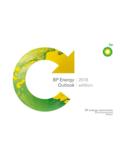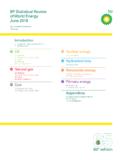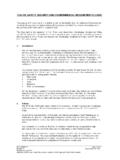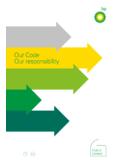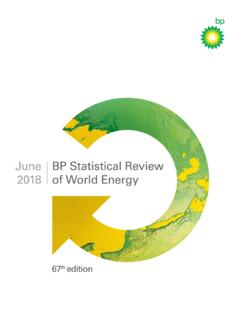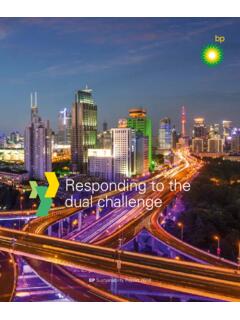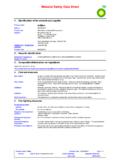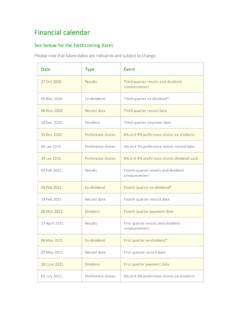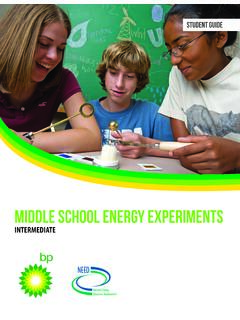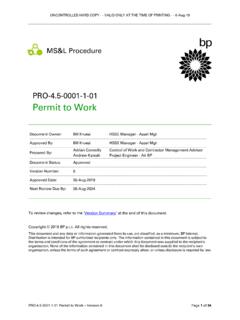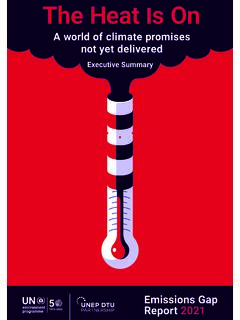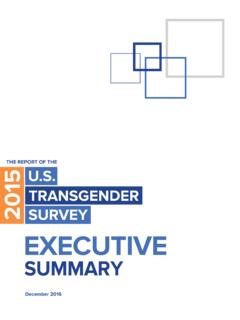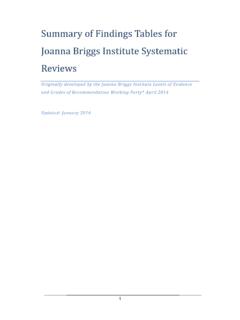Transcription of Deepwater Horizon Accident Investigation Report Executive ...
1 Deepwater Horizon Accident Investigation ReportSeptember 8, 2010 Executive SummaryThis is the Report of an internal BP incident Investigation team. The Report does not represent the views of any individual or entity other than the Investigation team. The Investigation team has produced the Report exclusively for and at the request of BP in accordance with its Terms of Reference, and any decision to release the Report publicly is the responsibility of BP. It has not been prepared in response to any third party Investigation , inquiry or litigation. In preparing this Report , the Investigation team did not evaluate evidence against legal standards, including but not limited to standards regarding causation, liability, intent and the admissibility of evidence in court or other proceedings.
2 This Report is based on the information available to the Investigation team during the Investigation ; availability of additional information might have led to other conclusions or altered the team s findings and times, the evidence available to the Investigation team was contradictory, unclear or uncorroborated. The Investigation team did not seek to make credibility determinations in such cases. In evaluating the information available to it, the Investigation team used its best judgment but recognizes that others could reach different conclusions or ascribe different weight to particular the course of the Investigation , members of the team conducted interviews, and this Report draws upon the team members understanding of those interviews.
3 The Investigation team did not record or produce verbatim transcripts of any interviews, nor did the team ask interviewees to review or endorse the notes taken by the interview team members. There were at least two team members present during each interview and, in utilizing information gathered from interviews, the team has taken into account the presence or absence of corroborating or conflicting evidence from other sources. The Report should be read as a whole, and individual passages should be viewed in the context of the entire Report . Discussion or analysis that is based, to any extent, on work carried out by third parties for example, on laboratory or consultant reports commissioned by the Investigation team (refer to the appendices of this Report ) is subject to the same qualifications or limitations to which that work was are occasionally used to depict information and scenarios; these may be simplified or not to scale and are intended only as an aid to the reader in the context of the discussion that they support.
4 Wherever appropriate, the Report indicates the source or nature of the information on which analysis has been based or conclusions have been reached. Where such references would be overly repetitive or might otherwise confuse the presentation, evidentiary references have been omitted. Deepwater Horizon Accident Investigation ReportExecutive summary On the evening of April 20, 2010, a well control event allowed hydrocarbons to escape from the Macondo well onto Transocean s Deepwater Horizon , resulting in explosions and fire on the rig. Eleven people lost their lives, and 17 others were injured. The fire, which was fed by hydrocarbons from the well, continued for 36 hours until the rig sank.
5 Hydrocarbons continued to flow from the reservoir through the wellbore and the blowout preventer (BOP) for 87 days, causing a spill of national significance. BP Exploration & Production Inc. was the lease operator of Mississippi Canyon Block 252, which contains the Macondo well. BP formed an Investigation team that was charged with gathering the facts surrounding the Accident , analyzing available information to identify possible causes and making recommendations to enable prevention of similar accidents in the future. The BP Investigation team began its work immediately in the aftermath of the Accident , working independently from other BP spill response activities and organizations.
6 The ability to gather information was limited by a scarcity of physical evidence and restricted access to potentially relevant witnesses. The team had access to partial real-time data from the rig, documents from various aspects of the Macondo well s development and construction, witness interviews and testimony from public hearings. The team used the information that was made available by other companies, including Transocean, Halliburton and Cameron. Over the course of the Investigation , the team involved over 50 internal and external specialists from a variety of fields: safety, operations, subsea, drilling, well control, cementing, well flow dynamic modeling, BOP systems and process hazard analysis.
7 This Report presents an analysis of the events leading up to the Accident , eight key findings related to the causal chain of events and recommendations to enable the prevention of a similar Accident . The Investigation team worked separately from any Investigation conducted by other companies involved in the Accident , and it did not review its analyses, conclusions or recommendations with any other company or Investigation team. Also, at the time this Report was written, other investigations, such as the Coast Guard and Bureau of Ocean Energy Management, Regulation and Enforcement Joint Investigation and the President s National Commission were ongoing.
8 While the understanding of this Accident will continue to develop with time, the information in this Report can support learning and the prevention of a Accident on April 20, 2010, involved a well integrity failure, followed by a loss of hydrostatic control of the well. This was followed by a failure to control the flow from the well with the BOP equipment, which allowed the release and subsequent ignition of hydrocarbons. Ultimately, the BOP emergency functions failed to seal the well after the initial the course of the Investigation , the team used fault tree analysis to define and consider various scenarios, failure modes and possible contributing factors.
9 Executive summary Executive Summary3 Deepwater Horizon Accident Investigation ReportExecutive summary Eight key findings related to the causes of the Accident emerged. These findings are briefly described below. An overview of the team s analyses and key findings is provided in Section 4. Overview of Deepwater Horizon Accident Analyses, while Section 5. Deepwater Horizon Accident Analyses provides the detailed analyses. Refer to Figure 1. Macondo Well, for details of the well. 1 The annulus cement barrier did not isolate the hydrocarbons. The day before the Accident , cement had been pumped down the production casing and up into the wellbore annulus to prevent hydrocarbons from entering the wellbore from the reservoir.
10 The annulus cement that was placed across the main hydrocarbon zone was a light, nitrified foam cement slurry. This annulus cement probably experienced nitrogen breakout and migration, allowing hydrocarbons to enter the wellbore annulus. The Investigation team concluded that there were weaknesses in cement design and testing, quality assurance and risk assessment. 2 The shoe track barriers did not isolate the hydrocarbons. Having entered the wellbore annulus, hydrocarbons passed down the wellbore and entered the 9 7/8 in. x 7 in. production casing through the shoe track, installed in the bottom of the casing. Flow entered into the casing rather than the casing annulus.
